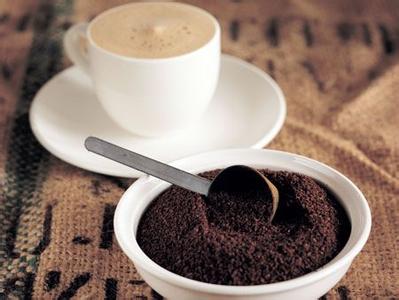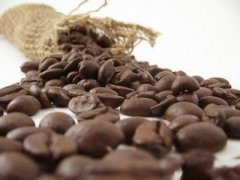Some concepts of common words in extraction of boutique coffee beans
Blonding: describes the conversion of the liquid from dark brown with tiger stripes to uniform light yellow. This usually occurs in the last 1amp 3 stage, indicating that the extraction operation can be ended. The over-yellowing part of espresso has a light taste and almost no aroma. If it lasts too long, it will dilute the mellowness and is no longer a pleasant taste.

Channel effect (channeling): water flows rapidly through cracks in coffee cakes, resulting in thin, underextracted espresso. When this happens, a yellowing stripe is often seen in the coffee stream; sometimes the channel effect leaves a pencil lead-sized hole in the coffee cake.
Coffee oil (Crema): it is the result of confirming that espresso is made properly (on coffee machines where coffee oil is not forced) that various gases-air and carbon dioxide-are distributed in water under high pressure. The liquid also includes emulsified oil. A deep golden brown foam is formed on the surface of espresso.
Golden rate (Golden rule): a common term describing the ideal time and capacity for extracting espresso. The Italian National Coffee Institute (Instituto Nationale Espresso Italiano) provides a practical definition of the ideal espresso properties, although these parameters are more like the "golden rule" than mandatory rules. The simple definition is: use about 16-18 grams of coffee to produce 60 milliliters of double servings in 22 to 27 seconds (from the time the coffee liquid flows out).
Over-extraction: too much coffee solids are extracted to produce a strong, irritating aroma. Visually, the capacity of coffee is insufficient, and coffee oil is a thin layer of blackening. The dark black circle on the edge of the cup is another typical indication of over-extraction or excessive extraction of water temperature.
Pre-infusion: the act of infiltrating coffee powder in an espresso machine before it is actually extracted. Some coffee machines are achieved through pumps; the pump works for 1 / 2 seconds and stops for 1 / 2 seconds. Then start again and continue to extract coffee. Full automata and some automatic machines use this approach. The other is called "natural" or progressive prepreg, and this is the kind of machine with E61 outlet head. After the pump starts, the pressure is completely applied before the coffee cake, and the second cavity must be filled. The soaking time for coffee powder was 3-7 seconds before the pressure was established. This kind of prepreg is more popular. There is a car saying that progressive pre-wetting can improve the extraction of coffee.
Tiger spot stripes and variegated spots: the main visual cues for good extraction. The tiger spot is formed by the contrast between dark and light coffee oil in the coffee stream; ideally it appears at the beginning of the coffee and lasts until the end. "mottling" is the performance of good extraction in the cup; refers to the dark brown spots and reddish brown markings formed on the surface of coffee oil.
Insufficient extraction: coffee solids are not extracted enough to produce a light, boring aroma. Visually, it is a fast and large-capacity extraction, and the coffee oil is a uniform light yellow.
Important Notice :
前街咖啡 FrontStreet Coffee has moved to new addredd:
FrontStreet Coffee Address: 315,Donghua East Road,GuangZhou
Tel:020 38364473
- Prev

Selection of coffee grinder for high-quality coffee beans
The grinder is more important than the coffee machine, and players recommend a sawtooth grinder because it can grind uniform coffee powder quickly and steadily. When you choose to buy a grinder, you should pay attention to its power, usually between 70 watts and 150 watts, the higher the better, the higher the power, the faster the grinding speed, and the shorter time the coffee powder stays in the sawtooth, so it can grind coffee with low temperature.
- Next

Boutique coffee knowledge do you use a coffee spoon when drinking coffee?
Can you use a coffee spoon when drinking coffee? The real use of the coffee spoon is to stir the coffee, not to scoop the coffee. Put the coffee spoon aside after stirring. Some coffee shops simply do not have coffee spoons, only disposable mixing sticks, the use is the same. Never use a coffee spoon to scoop coffee.
Related
- Beginners will see the "Coffee pull flower" guide!
- What is the difference between ice blog purified milk and ordinary milk coffee?
- Why is the Philippines the largest producer of crops in Liberia?
- For coffee extraction, should the fine powder be retained?
- How does extracted espresso fill pressed powder? How much strength does it take to press the powder?
- How to make jasmine cold extract coffee? Is the jasmine + latte good?
- Will this little toy really make the coffee taste better? How does Lily Drip affect coffee extraction?
- Will the action of slapping the filter cup also affect coffee extraction?
- What's the difference between powder-to-water ratio and powder-to-liquid ratio?
- What is the Ethiopian local species? What does it have to do with Heirloom native species?

